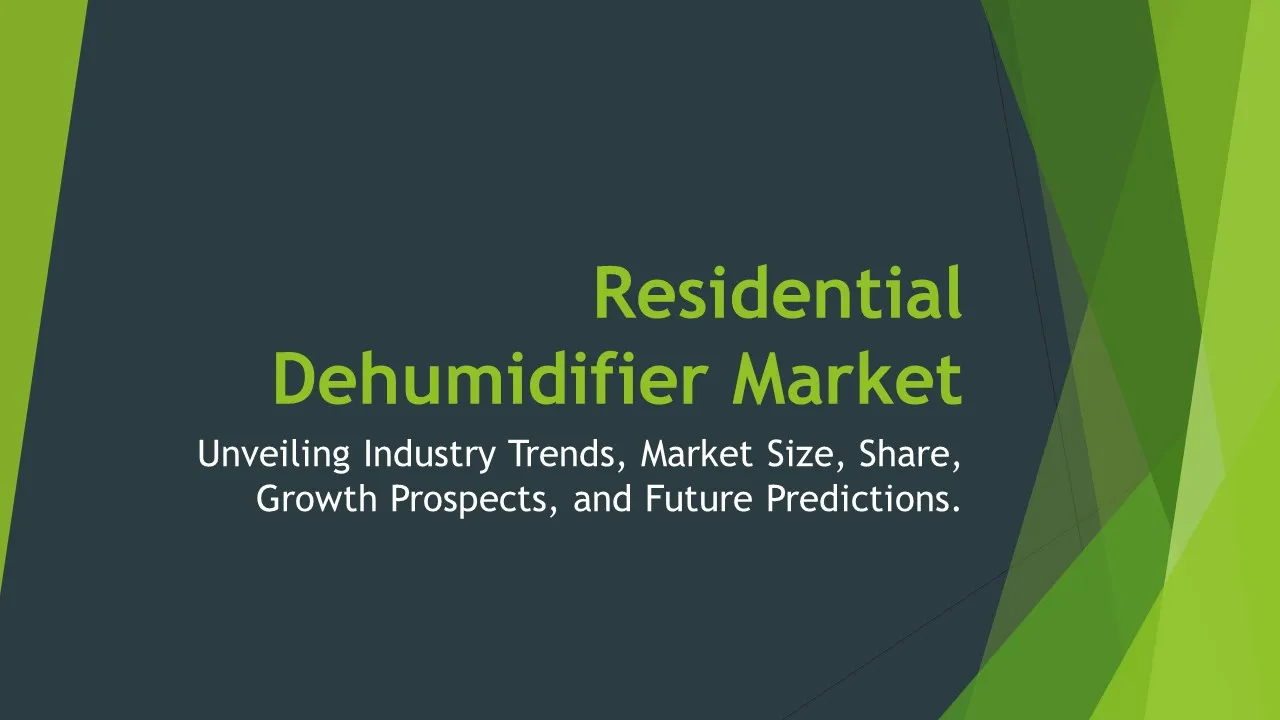Animal Disinfectants
Animal Disinfectants Market Segments - by Product Type (Surface Disinfectants, Water Sanitizers, Air Purifiers, Equipment Cleaners, and Others), Application (Livestock Farms, Veterinary Clinics, Animal Shelters, Pet Grooming Centers, and Others), Distribution Channel (Online Stores, Veterinary Pharmacies, Pet Stores, Agricultural Supply Stores, and Others), Active Ingredients (Quaternary Ammonium Compounds, Chlorine Compounds, Phenols, Iodophors, and Others), and Region (North America, Europe, Asia Pacific, Latin America, Middle East & Africa) - Global Industry Analysis, Growth, Share, Size, Trends, and Forecast 2025-2035
- Report Preview
- Table Of Content
- Segments
- Methodology
Animal Disinfectants Market Outlook
The global animal disinfectants market was valued at approximately USD 2.5 billion in 2022 and is projected to reach USD 4.2 billion by 2035, growing at a CAGR of about 5.2% during the forecast period. The increasing need for hygiene and biosecurity in livestock farming, coupled with the rising awareness regarding animal health and welfare, is driving the growth of this market. Furthermore, the surge in pet ownership across various regions has resulted in heightened demand for effective disinfectants to ensure a safe environment in veterinary clinics and pet grooming centers. The growing incidence of zoonotic diseases has further emphasized the importance of using disinfectants to mitigate risks associated with animal health, thus supporting market expansion. Additionally, advancements in disinfectant formulations and the development of eco-friendly products are poised to create new growth opportunities within the sector.
Growth Factor of the Market
The growth of the animal disinfectants market is primarily attributed to the rising demand for animal welfare and the growing concerns regarding zoonotic diseases. The livestock sector is increasingly influenced by stringent regulations and standards related to animal health, leading to greater investments in biosecurity measures, which include the adoption of disinfectants. Moreover, the trend of urbanization has led to an increase in pet ownership, further driving the need for effective disinfectants in veterinary clinics and grooming centers. The advancements in technology have also facilitated the development of innovative and effective formulations that cater to different applications and surfaces, enhancing the market's growth potential. Additionally, the heightened awareness of the relationship between animal health and food safety among consumers is likely to bolster the demand for animal disinfectants, thus propelling market growth.
Key Highlights of the Market
- The market is expected to witness a CAGR of 5.2% from 2025 to 2035.
- Surface disinfectants are anticipated to dominate the product type segment due to their widespread application in various environments.
- Livestock farms are projected to hold the largest share in the application segment, driven by the growing emphasis on animal biosecurity.
- Online stores are increasingly becoming the preferred distribution channel, providing convenience and accessibility to consumers.
- North America is expected to lead the regional market due to the high prevalence of livestock farming and stringent regulations for animal health.
By Product Type
Surface Disinfectants:
Surface disinfectants are a crucial segment of the animal disinfectants market, primarily used to sanitize surfaces in veterinary clinics, livestock farms, and animal shelters. These disinfectants are designed to eliminate bacteria, viruses, and fungi on surfaces, ensuring a hygienic environment for animals. The increasing adoption of stringent hygiene protocols and the rising awareness of the importance of maintaining a clean environment for animal health are major factors driving the demand for surface disinfectants. Additionally, the development of advanced formulations that provide prolonged efficacy and are safe for use around animals is further propelling this segment. Product innovation and the introduction of eco-friendly options are also enhancing market growth in this category.
Water Sanitizers:
Water sanitizers play a vital role in ensuring the safety and health of animals by preventing waterborne diseases. These products are increasingly being used in livestock farms and animal shelters where clean water is essential for animal welfare. The rising awareness of the importance of providing clean drinking water, coupled with stringent regulations regarding water quality in animal farming, is contributing to the growth of this segment. The market for water sanitizers is further augmented by advancements in technology that allow for more effective and efficient sanitization processes. Furthermore, the availability of various formulations tailored to specific requirements enhances the appeal of water sanitizers in the animal disinfectants market.
Air Purifiers:
Air purifiers are gaining traction as an essential tool in maintaining a healthy environment for animals, particularly in enclosed spaces such as veterinary clinics and animal shelters. These devices help eliminate airborne pathogens, allergens, and odors, thereby improving the overall air quality for both animals and humans. The growing focus on indoor air quality, especially in the wake of the recent pandemic, has led to increased investments in air purification technologies. The demand for air purifiers in the animal disinfectants market is expected to rise as facilities strive to comply with health regulations and enhance the well-being of their animals. Additionally, the development of smart air purifiers that can monitor air quality in real-time is further driving interest in this segment.
Equipment Cleaners:
Equipment cleaners are specialized products designed to sanitize tools and equipment used in animal care and farming. The need for effective equipment cleaning is paramount in preventing cross-contamination and the spread of diseases among animals. As biosecurity measures become more pronounced in the animal husbandry sector, the demand for reliable equipment cleaners is witnessing a considerable surge. These products are formulated to be effective against a broad spectrum of pathogens, ensuring that all equipment remains sanitized and safe for use. The increasing focus on hygiene and the adoption of best practices in livestock management are key factors contributing to the growth of this product type.
Others:
The 'Others' category in the product type segment encompasses a variety of disinfecting solutions that cater to specialized needs within the animal care sector. This may include products designed for specific applications or formulations that target particular pathogens or environments. The diversity of this segment allows for innovation and customization in response to the evolving challenges faced by animal caregivers and farmers. As awareness of animal health issues grows, so does the demand for specialized disinfecting solutions, which are anticipated to contribute positively to the overall market growth.
By Application
Livestock Farms:
Livestock farms represent a significant application segment for animal disinfectants, driven by the need to maintain biosecurity and prevent the outbreak of diseases among livestock. The increasing prevalence of zoonotic diseases and the growing emphasis on animal welfare necessitate robust sanitation practices within these facilities. Farmers are adopting a comprehensive approach to biosecurity that includes regular disinfecting of barns, feed areas, and equipment, significantly boosting the demand for disinfectants in this sector. Additionally, government regulations regarding livestock health and food safety are prompting farmers to invest in effective disinfectants, thereby fostering growth in this application segment.
Veterinary Clinics:
Veterinary clinics are a crucial market for animal disinfectants, providing healthcare services to pets and livestock. The demand for disinfectants in this sector is driven by the need to maintain sterile environments and prevent the spread of infections among animals. As pet ownership continues to rise, the number of veterinary clinics and facilities is also increasing, leading to a higher demand for disinfecting solutions. Veterinary clinics are adopting advanced disinfectant products that offer quick and effective sanitization, aligning with the growing standards of care and hygiene in animal healthcare. The emphasis on client satisfaction and animal welfare further propels the market for disinfectants in veterinary settings.
Animal Shelters:
Animal shelters are another key application area for animal disinfectants, primarily due to the high density of animals and the constant introduction of new animals into the facility. Maintaining a clean and sanitary environment is critical to preventing disease outbreaks in shelters, which can impact both animal and human health. Disinfectants are essential for cleaning kennels, food preparation areas, and communal spaces. The growing awareness of animal welfare and the role of shelters in rescue and rehabilitation efforts are contributing to the demand for effective disinfecting solutions within this segment. Moreover, partnerships between shelters and veterinary organizations are further emphasizing the importance of hygiene and disinfection in these facilities.
Pet Grooming Centers:
Pet grooming centers are increasingly recognizing the need for effective disinfectants to maintain hygiene and provide a safe environment for pets. These centers require regular sanitization of grooming equipment, bathing areas, and waiting rooms to minimize the risk of cross-contamination among clients’ pets. The rising trend of pet pampering and grooming services is fueling the demand for disinfectants in this sector. Grooming centers are also seeking products that are both effective and safe for use around animals, thus driving innovation in formulations. As pet owners become more aware of the importance of hygiene in grooming, the demand for reliable disinfecting products is anticipated to grow significantly.
Others:
The 'Others' category in the application segment includes various environments where animal disinfectants are utilized, such as research laboratories, zoos, and farms specializing in exotic animals. These areas often have unique contamination challenges and require specialized disinfecting solutions to ensure the health and safety of animals. The increasing focus on biodiversity conservation and animal research is contributing to the demand for disinfectants in these less conventional applications. Moreover, heightened biosecurity concerns in all sectors of animal care and management are leading to an increased focus on sanitation practices, ultimately supporting the growth of disinfectants in this category.
By Distribution Channel
Online Stores:
Online stores have emerged as a dominant distribution channel in the animal disinfectants market, offering convenience and a wide selection of products to consumers. The rise of e-commerce platforms has transformed the way consumers purchase disinfectants, allowing for easy access to various brands and formulations. Additionally, online retailers often provide detailed product information, user reviews, and competitive pricing, making it an attractive option for both commercial buyers and individual pet owners. The shift towards online shopping, accelerated by the pandemic, has led to an increase in sales through this channel, with many consumers now preferring the convenience of purchasing disinfectants from the comfort of their homes.
Veterinary Pharmacies:
Veterinary pharmacies serve as an important distribution channel for animal disinfectants, providing specialized products tailored specifically for veterinary applications. These pharmacies are often staffed by professionals who can offer expert advice on the selection and use of disinfectants, enhancing customer confidence in their purchases. The demand for disinfectants in veterinary pharmacies is driven by the need for accessible and effective cleaning solutions within veterinary clinics and shelters. As veterinary practices expand and more pet owners seek professional care, the role of veterinary pharmacies as a key distributor in the market is expected to grow significantly, alongside the increasing focus on animal health and hygiene.
Pet Stores:
Pet stores are another significant distribution channel for animal disinfectants, catering to pet owners who prioritize cleanliness and hygiene at home. These stores typically offer a variety of disinfectant products designed for pet care, including sprays, wipes, and specialty cleaners. As pet ownership rises and consumers become more conscientious about their pets’ health, the demand for disinfectants in pet stores continues to increase. Retailers are capitalizing on this trend by expanding their product offerings and promoting the importance of sanitation in pet care. Additionally, in-store promotions and educational campaigns are helping to raise awareness about the benefits of regular cleaning and disinfecting, further driving sales in this channel.
Agricultural Supply Stores:
Agricultural supply stores are vital distribution channels for animal disinfectants, especially for those catering to livestock farms. These stores often cater to farmers' needs, providing a variety of products necessary for maintaining biosecurity and hygiene in agricultural environments. The demand for disinfectants in agricultural supply stores is driven by the necessity of preventing disease outbreaks in livestock, as well as adherence to regulatory standards governing animal health. Furthermore, these stores often provide a one-stop-shop experience, allowing farmers to purchase disinfectants alongside other essential supplies, thereby enhancing consumer convenience and promoting higher sales volumes.
Others:
The 'Others' category in the distribution channel segment includes various other outlets such as direct sales from manufacturers, trade shows, and agricultural cooperatives. These channels offer alternative purchasing options for consumers, especially in specialized or rural markets where traditional retail channels may be less accessible. Direct sales often foster strong relationships between manufacturers and customers, allowing for tailored solutions and support. Furthermore, participation in trade shows provides manufacturers with opportunities to showcase their products, connect with potential buyers, and gain insights into market trends. As the market evolves, these alternative distribution channels are expected to play an increasingly important role in ensuring the availability of disinfectants in the animal care sector.
By Active Ingredients
Quaternary Ammonium Compounds:
Quaternary ammonium compounds, commonly referred to as quats, are widely used in animal disinfectants due to their strong antimicrobial properties. These compounds are effective against a broad range of pathogens, making them suitable for various applications in veterinary clinics, farms, and shelters. The efficacy of quaternary ammonium compounds against bacteria, viruses, and fungi underscores their importance in maintaining hygiene and biosecurity in animal care environments. The ease of use and compatibility with different surfaces enhances their appeal among consumers. As the demand for effective disinfectants grows, quaternary ammonium compounds are expected to maintain a significant share in the active ingredients segment, driven by continuous product innovation and enhanced formulations.
Chlorine Compounds:
Chlorine compounds are another key category of active ingredients in the animal disinfectants market, known for their powerful disinfecting properties. These compounds are commonly used in water sanitization and surface disinfection due to their effectiveness against a wide range of pathogens, including bacteria and viruses. The use of chlorine compounds is essential in environments such as livestock farms and veterinary clinics where high levels of hygiene are crucial. Despite their effectiveness, careful handling and proper dilution are necessary to ensure safety around animals and humans. The growing emphasis on maintaining high hygiene standards is expected to drive the demand for chlorine-based disinfectants in the animal care sector.
Phenols:
Phenols are a class of compounds that are utilized in disinfectants for their potent antimicrobial properties. They are particularly effective in destroying bacteria and are commonly used in veterinary applications where robust sanitization is required. The use of phenolic compounds in animal disinfectants is driven by their ability to achieve rapid disinfection and residual activity, making them suitable for various surfaces and equipment in animal care settings. While phenols are effective, there are concerns regarding their potential toxicity to animals and humans; therefore, proper usage guidelines are critical. As awareness of animal health and biosecurity continues to grow, the demand for phenol-based disinfectants is expected to remain stable in the market.
Iodophors:
Iodophors represent a unique class of disinfectants that release iodine, making them effective against a wide range of microorganisms. These compounds are particularly valued for their use in veterinary practices and livestock farming due to their residual antimicrobial activity and effectiveness in organic matter presence. Iodophors are often used in water sanitization and surface disinfection, contributing to improved hygiene in animal care environments. As the demand for effective disinfecting solutions grows, iodophors are gaining recognition for their balanced efficacy and safety profile, especially in environments where animals are present. Their continued application is expected to enhance the overall effectiveness of biosecurity measures in animal care settings.
Others:
The 'Others' category in active ingredients includes a variety of disinfecting agents that do not fit into the primary classifications. This may include natural disinfectants, such as essential oils, which are gaining popularity due to their eco-friendly profiles and perceived safety for use around animals. The emergence of alternative and sustainable disinfecting solutions is responding to the increasing consumer demand for environmentally friendly products. As regulations concerning chemical usage evolve, manufacturers are likely to innovate and develop new formulations that utilize lesser-known active ingredients. Ultimately, the diversity of active ingredients is expected to contribute positively to the growth of the animal disinfectants market as consumers seek effective yet safe sanitization solutions.
By Region
The regional analysis of the animal disinfectants market reveals significant differences in demand and growth patterns across various regions. North America leads the market, attributed to the high concentration of livestock farming, stringent regulations regarding animal health, and increasing awareness about biosecurity measures. The North American market is projected to grow at a CAGR of 5.5% from 2025 to 2035, driven by a combination of regulatory pressures and consumer demand for high-quality disinfectant products. The rising incidence of zoonotic diseases in this region further emphasizes the need for effective disinfecting solutions in veterinary clinics and farms, contributing to the robust growth of the market.
Europe is another significant market for animal disinfectants, driven by regulations promoting animal health and welfare. The increasing pet ownership rates and the growth of veterinary services have supported the demand for disinfectants in this region. Countries such as Germany and the United Kingdom are at the forefront of this trend, with substantial investments in animal health and biosecurity measures. The European market is expected to witness steady growth as consumers increasingly prioritize hygiene in animal care and as agricultural practices evolve to meet new standards. The overall regional analysis indicates a trend toward heightened awareness of hygiene and biosecurity, supporting market expansion across the globe.
Opportunities
The animal disinfectants market presents a multitude of opportunities for growth and innovation, particularly with the rising global focus on animal health and biosecurity. As livestock farming practices evolve, there is an increasing demand for advanced disinfectants that are effective against emerging pathogens and environmentally sustainable. Companies have the opportunity to invest in research and development to create new formulations that cater to the specific needs of livestock and companion animals. Furthermore, the trend of urbanization and the rise in pet ownership create additional market potential, as pet owners seek reliable disinfecting solutions to maintain hygiene in their homes. By targeting these growing consumer segments and addressing their specific needs, businesses can effectively capitalize on the opportunities within the market.
Additionally, the increased collaboration between manufacturers, veterinary services, and agricultural organizations is an opportunity for driving growth in the animal disinfectants market. Such partnerships can lead to the development of comprehensive biosecurity programs that utilize a range of disinfecting solutions tailored to various applications and environments. Furthermore, education and training initiatives aimed at raising awareness of proper disinfecting practices among farmers and pet owners can lead to increased product adoption. The growing trend towards sustainability and eco-friendliness in product offerings also presents an opportunity for companies to differentiate themselves in the marketplace by offering innovative solutions that meet consumer demands for safe and effective disinfectants.
Threats
Despite the growth potential, the animal disinfectants market also faces several threats that could hinder its expansion. One significant concern is the increasing resistance of pathogens to commonly used disinfectants, which can lead to reduced efficacy and necessitate continuous innovation and reformulation. This resistance poses a challenge for manufacturers, as maintaining product effectiveness is essential for consumer trust and safety. Additionally, regulatory pressures and changes in safety standards for chemical products can impact the availability and formulation of certain disinfectants, potentially limiting options for consumers. Companies must navigate these regulatory challenges while ensuring compliance without compromising product efficacy.
Moreover, the market is also influenced by fluctuating raw material prices and supply chain disruptions, which can impact production costs and availability of disinfectants. Such fluctuations can lead to increased prices for end-users, affecting demand. Economic downturns or crises, such as pandemics, can also shift consumer priorities, potentially reducing spending on non-essential products, including disinfectants. To mitigate these threats, companies must remain agile and responsive to market changes, invest in research for innovative solutions, and establish robust supply chain strategies to ensure product availability and affordability.
Competitor Outlook
- Zoetis Inc.
- Boehringer Ingelheim
- Merial (Part of Boehringer Ingelheim)
- DeLaval
- Alltech
- Neogen Corporation
- Hygiena LLC
- GermAway Inc.
- VetBiotek
- Animal Health International
- Patterson Veterinary Supply
- West nile virus diagnostic reagents
- Certified Veterinary Supply
- Safe4U
- Intervet International B.V.
The competitive landscape of the animal disinfectants market is characterized by a mix of well-established companies and emerging players, each striving to innovate and capture market share. Leading companies are investing in research and development to enhance their product offerings, focusing on developing advanced formulations that meet the evolving needs of consumers and regulatory standards. Additionally, strategic partnerships, mergers, and acquisitions are becoming common as companies seek to expand their product lines and extend their market reach. The emphasis on sustainability and eco-friendliness is also shaping competition, as consumers increasingly prefer products that align with their values concerning health and environmental impact.
Companies like Zoetis Inc. and Boehringer Ingelheim are at the forefront of the market, leveraging their extensive research capabilities and established distribution channels to deliver high-quality disinfectants. Zoetis Inc., known for its commitment to animal health, offers a range of disinfecting solutions tailored for various applications, including livestock and veterinary practices. Boehringer Ingelheim, with its strong portfolio in animal healthcare, emphasizes biosecurity and hygiene in its product offerings, responding to the increasing awareness of disease prevention in livestock and companion animals.
Emerging companies like Neogen Corporation and Hygiena LLC are also gaining traction in the market by focusing on innovative products and customer-centric solutions. Neogen Corporation specializes in food safety and animal health products, including a variety of disinfectants designed for use in agricultural settings. Hygiena LLC is known for its advanced cleaning and sanitation solutions, employing modern technologies to enhance the effectiveness of disinfectants. These companies are positioning themselves as key players in the market by addressing specific consumer needs and prioritizing product efficacy and safety.
1 Appendix
- 1.1 List of Tables
- 1.2 List of Figures
2 Introduction
- 2.1 Market Definition
- 2.2 Scope of the Report
- 2.3 Study Assumptions
- 2.4 Base Currency & Forecast Periods
3 Market Dynamics
- 3.1 Market Growth Factors
- 3.2 Economic & Global Events
- 3.3 Innovation Trends
- 3.4 Supply Chain Analysis
4 Consumer Behavior
- 4.1 Market Trends
- 4.2 Pricing Analysis
- 4.3 Buyer Insights
5 Key Player Profiles
- 5.1 Safe4U
- 5.1.1 Business Overview
- 5.1.2 Products & Services
- 5.1.3 Financials
- 5.1.4 Recent Developments
- 5.1.5 SWOT Analysis
- 5.2 Alltech
- 5.2.1 Business Overview
- 5.2.2 Products & Services
- 5.2.3 Financials
- 5.2.4 Recent Developments
- 5.2.5 SWOT Analysis
- 5.3 DeLaval
- 5.3.1 Business Overview
- 5.3.2 Products & Services
- 5.3.3 Financials
- 5.3.4 Recent Developments
- 5.3.5 SWOT Analysis
- 5.4 VetBiotek
- 5.4.1 Business Overview
- 5.4.2 Products & Services
- 5.4.3 Financials
- 5.4.4 Recent Developments
- 5.4.5 SWOT Analysis
- 5.5 Hygiena LLC
- 5.5.1 Business Overview
- 5.5.2 Products & Services
- 5.5.3 Financials
- 5.5.4 Recent Developments
- 5.5.5 SWOT Analysis
- 5.6 Zoetis Inc.
- 5.6.1 Business Overview
- 5.6.2 Products & Services
- 5.6.3 Financials
- 5.6.4 Recent Developments
- 5.6.5 SWOT Analysis
- 5.7 GermAway Inc.
- 5.7.1 Business Overview
- 5.7.2 Products & Services
- 5.7.3 Financials
- 5.7.4 Recent Developments
- 5.7.5 SWOT Analysis
- 5.8 Neogen Corporation
- 5.8.1 Business Overview
- 5.8.2 Products & Services
- 5.8.3 Financials
- 5.8.4 Recent Developments
- 5.8.5 SWOT Analysis
- 5.9 Boehringer Ingelheim
- 5.9.1 Business Overview
- 5.9.2 Products & Services
- 5.9.3 Financials
- 5.9.4 Recent Developments
- 5.9.5 SWOT Analysis
- 5.10 Animal Health International
- 5.10.1 Business Overview
- 5.10.2 Products & Services
- 5.10.3 Financials
- 5.10.4 Recent Developments
- 5.10.5 SWOT Analysis
- 5.11 Certified Veterinary Supply
- 5.11.1 Business Overview
- 5.11.2 Products & Services
- 5.11.3 Financials
- 5.11.4 Recent Developments
- 5.11.5 SWOT Analysis
- 5.12 Intervet International B.V.
- 5.12.1 Business Overview
- 5.12.2 Products & Services
- 5.12.3 Financials
- 5.12.4 Recent Developments
- 5.12.5 SWOT Analysis
- 5.13 Patterson Veterinary Supply
- 5.13.1 Business Overview
- 5.13.2 Products & Services
- 5.13.3 Financials
- 5.13.4 Recent Developments
- 5.13.5 SWOT Analysis
- 5.14 West nile virus diagnostic reagents
- 5.14.1 Business Overview
- 5.14.2 Products & Services
- 5.14.3 Financials
- 5.14.4 Recent Developments
- 5.14.5 SWOT Analysis
- 5.15 Merial (Part of Boehringer Ingelheim)
- 5.15.1 Business Overview
- 5.15.2 Products & Services
- 5.15.3 Financials
- 5.15.4 Recent Developments
- 5.15.5 SWOT Analysis
- 5.1 Safe4U
6 Market Segmentation
- 6.1 Animal Disinfectants Market, By Application
- 6.1.1 Livestock Farms
- 6.1.2 Veterinary Clinics
- 6.1.3 Animal Shelters
- 6.1.4 Pet Grooming Centers
- 6.1.5 Others
- 6.2 Animal Disinfectants Market, By Product Type
- 6.2.1 Surface Disinfectants
- 6.2.2 Water Sanitizers
- 6.2.3 Air Purifiers
- 6.2.4 Equipment Cleaners
- 6.2.5 Others
- 6.3 Animal Disinfectants Market, By Active Ingredients
- 6.3.1 Quaternary Ammonium Compounds
- 6.3.2 Chlorine Compounds
- 6.3.3 Phenols
- 6.3.4 Iodophors
- 6.3.5 Others
- 6.4 Animal Disinfectants Market, By Distribution Channel
- 6.4.1 Online Stores
- 6.4.2 Veterinary Pharmacies
- 6.4.3 Pet Stores
- 6.4.4 Agricultural Supply Stores
- 6.4.5 Others
- 6.1 Animal Disinfectants Market, By Application
7 Competitive Analysis
- 7.1 Key Player Comparison
- 7.2 Market Share Analysis
- 7.3 Investment Trends
- 7.4 SWOT Analysis
8 Research Methodology
- 8.1 Analysis Design
- 8.2 Research Phases
- 8.3 Study Timeline
9 Future Market Outlook
- 9.1 Growth Forecast
- 9.2 Market Evolution
10 Geographical Overview
- 10.1 Europe - Market Analysis
- 10.1.1 By Country
- 10.1.1.1 UK
- 10.1.1.2 France
- 10.1.1.3 Germany
- 10.1.1.4 Spain
- 10.1.1.5 Italy
- 10.1.1 By Country
- 10.2 Asia Pacific - Market Analysis
- 10.2.1 By Country
- 10.2.1.1 India
- 10.2.1.2 China
- 10.2.1.3 Japan
- 10.2.1.4 South Korea
- 10.2.1 By Country
- 10.3 Latin America - Market Analysis
- 10.3.1 By Country
- 10.3.1.1 Brazil
- 10.3.1.2 Argentina
- 10.3.1.3 Mexico
- 10.3.1 By Country
- 10.4 North America - Market Analysis
- 10.4.1 By Country
- 10.4.1.1 USA
- 10.4.1.2 Canada
- 10.4.1 By Country
- 10.5 Animal Disinfectants Market by Region
- 10.6 Middle East & Africa - Market Analysis
- 10.6.1 By Country
- 10.6.1.1 Middle East
- 10.6.1.2 Africa
- 10.6.1 By Country
- 10.1 Europe - Market Analysis
11 Global Economic Factors
- 11.1 Inflation Impact
- 11.2 Trade Policies
12 Technology & Innovation
- 12.1 Emerging Technologies
- 12.2 AI & Digital Trends
- 12.3 Patent Research
13 Investment & Market Growth
- 13.1 Funding Trends
- 13.2 Future Market Projections
14 Market Overview & Key Insights
- 14.1 Executive Summary
- 14.2 Key Trends
- 14.3 Market Challenges
- 14.4 Regulatory Landscape
Segments Analyzed in the Report
The global Animal Disinfectants market is categorized based on
By Product Type
- Surface Disinfectants
- Water Sanitizers
- Air Purifiers
- Equipment Cleaners
- Others
By Application
- Livestock Farms
- Veterinary Clinics
- Animal Shelters
- Pet Grooming Centers
- Others
By Distribution Channel
- Online Stores
- Veterinary Pharmacies
- Pet Stores
- Agricultural Supply Stores
- Others
By Active Ingredients
- Quaternary Ammonium Compounds
- Chlorine Compounds
- Phenols
- Iodophors
- Others
By Region
- North America
- Europe
- Asia Pacific
- Latin America
- Middle East & Africa
Key Players
- Zoetis Inc.
- Boehringer Ingelheim
- Merial (Part of Boehringer Ingelheim)
- DeLaval
- Alltech
- Neogen Corporation
- Hygiena LLC
- GermAway Inc.
- VetBiotek
- Animal Health International
- Patterson Veterinary Supply
- West nile virus diagnostic reagents
- Certified Veterinary Supply
- Safe4U
- Intervet International B.V.
- Publish Date : Jan 21 ,2025
- Report ID : CO-24574
- No. Of Pages : 100
- Format : |
- Ratings : 4.5 (110 Reviews)









